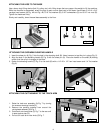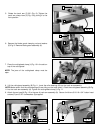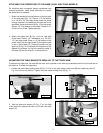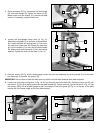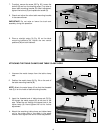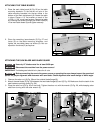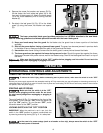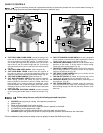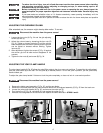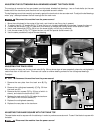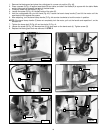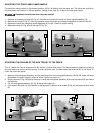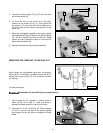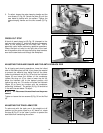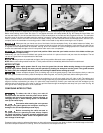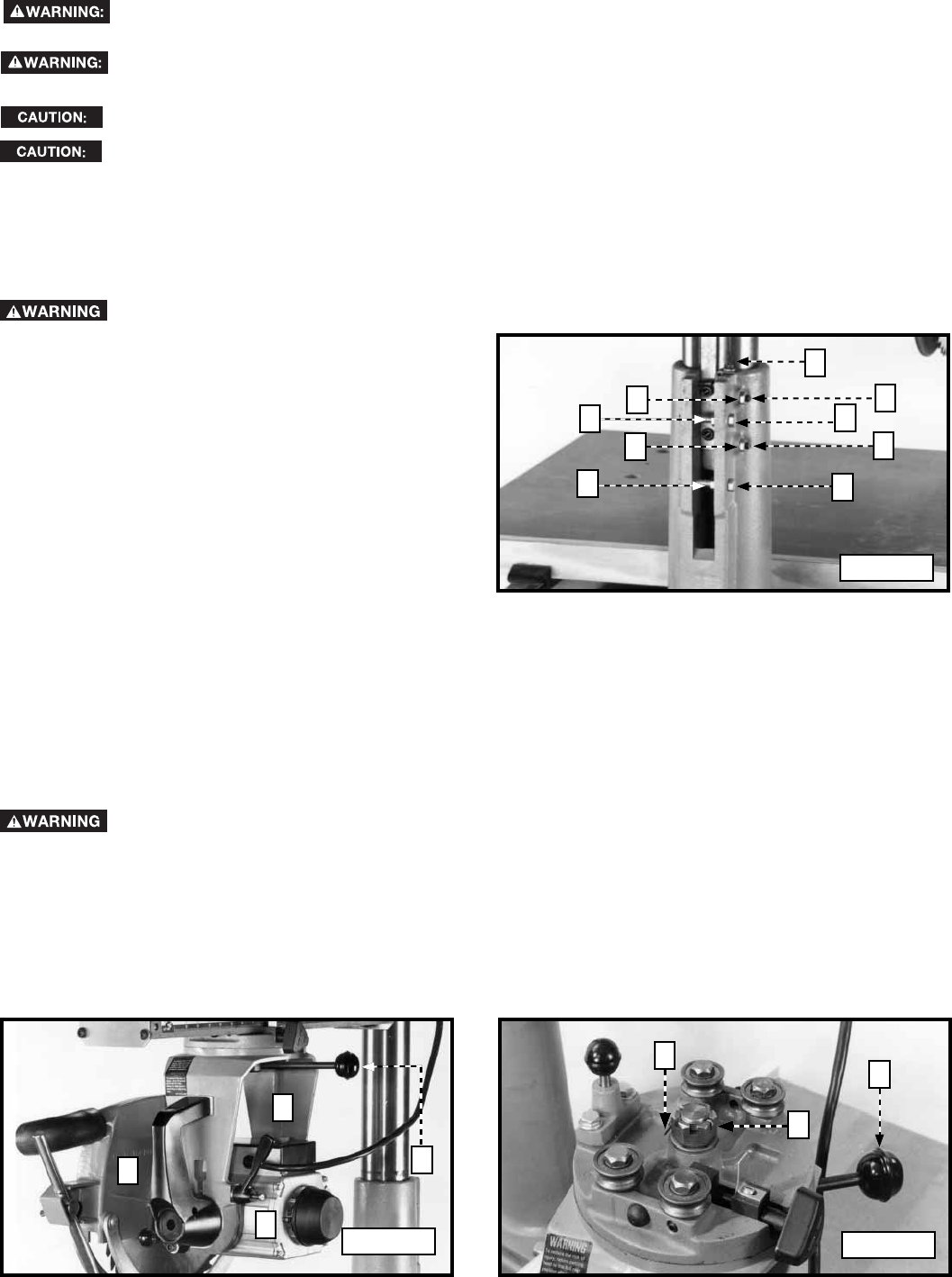
17
1. Loosen the hex nuts (A) Fig. 34 and the gib-adjusting
screws (B) and (C).
2. Adjust the column base by loosening the hex nuts (D)
Fig. 34. Tighten or loosen the bolts (E) until the column
base wraps around the column securely and the column
can be raised or lowered without binding. Tighten
locknuts (D).
3. After adjustment, tighten the screws (C) Fig. 34 against
the column gib until all side motion disappears in the
overarm.
4. Tighten the hex nuts (A) and screw (B) Fig. 34.
ADJUSTING THE OVERARM COLUMN
Fig. 34
E
D
A
D
A
C
E
C
B
Fig. 35
B
A
D
C
Fig. 36
After extended use, the overarm might develop side motion. To correct:
Disconnect the machine from the power source!
Disconnect the machine from the power source!
1. Remove the blade guard assembly (C) Fig. 35, and the saw blade.
2. Remove the rear end plate from the track arm and remove the cuttinghead assembly (D) Fig. 35 from the track arm.
3. Loosen the yoke clamp handle (A) Fig. 35, and remove the cotter pin (E).
4. Turn the hex nut (F) Fig. 36, clockwise 60° and replace the cotter pin (E).
5. Reinstall the cuttinghead on the track arm and replace the items removed in STEPS 2 and 3.
ADJUSTING THE YOKE CLAMP HANDLE
The yoke clamp handle (A) Fig. 35 allows the yoke (B) to rotate to the rip or cross-cut positions. To reposition the cuttinghead,
push the yoke handle (A) to the rear. Turn the yoke (B) to desired position. To lock the yoke in position, pull the yoke clamp
handle toward you.
To adjust the yoke clamp handle if it does not lock the yoke completely, or does not lock in a convenient position:
E
F
A
To reduce the risk of injury, turn unit off and disconnect machine from power source before installing
and removing accessories, before adjusting or changing set-ups, or when making repairs. An
accidental start-up can cause injury.
Before connecting the radial arm saw to the power source or operating the saw, always inspect the
guard and splitter for proper operation alignment and clearance with saw blade. Personal injury may
result.
If your saw makes an unfamiliar noise, or if it vibrates excessively, cease operating immediately until the
source has been located and the problem corrected.
The proper throat plate must be in place at all times to reduce the risk of a thrown workpiece and possible
injury.



